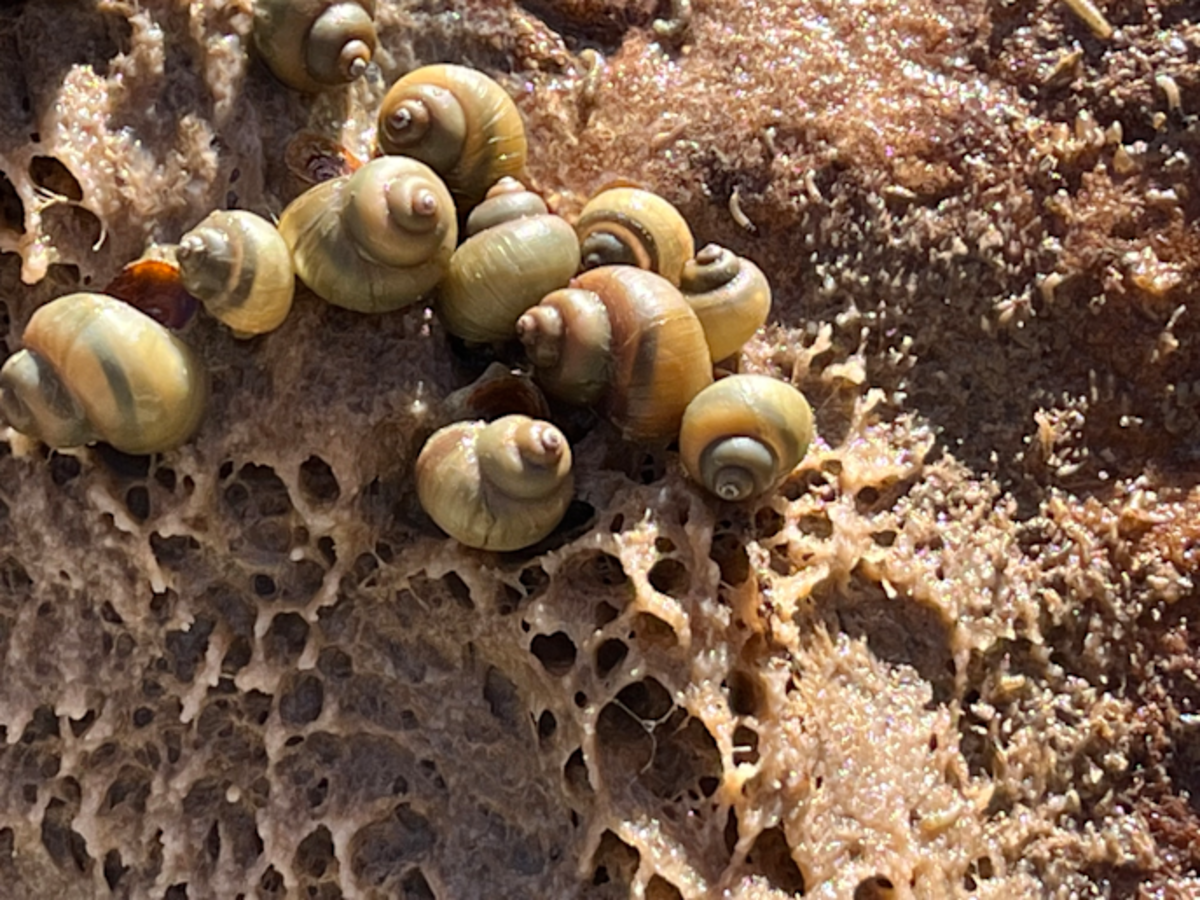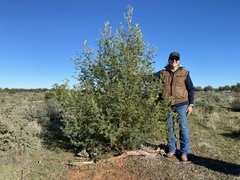When a Teenager's Sharp Eyes Made All the Difference
Kimberly Grabham
17 June 2025, 5:00 AM

Dr Sarah Martin wasn't looking for snails when she started her Murray-Darling Water and Environment Research Program project in Wilcannia.
Original Author Credit: Murray Darling Basin Authority (Kimberly reworked)
The water was cool around their legs as the team of Barkandji researchers waded carefully toward the weir wall.
They were following up on something that sounded almost too good to be true—a local teenager's claim that she'd spotted snails near the Wilcannia weir, snails that everyone thought had vanished from the Darling River years ago.
What they found clinging to and hiding under the rocks was nothing short of remarkable: living, breathing Darling River snails, a species so rare it's listed as critically endangered. The discovery came from the most unlikely of sources—a casual comment during a research interview that could have easily been overlooked.
Dr Sarah Martin wasn't looking for snails when she started her Murray-Darling Water and Environment Research Program project in Wilcannia.
The archaeologist was there to collect oral histories about fish traps, documenting the First Nations' knowledge that's been passed down through Barkandji families for generations.
Over the course of about 25 interviews with Barkandji elders and young people, she heard stories that painted a picture of dramatic change along the Darling River.
People spoke about the different species that once lived in the waterways and how the river had transformed over their lifetimes.
The older Barkandji people had clear memories of the snails.
They recalled eating them, using them as bait, treating them as just another part of the river's bounty.
But those same voices confirmed what scientists already suspected—the snails had disappeared many years ago, victims of habitat loss, changed water flows, and the relentless appetite of introduced carp.
Even the mussels were gone now, locals explained. They'd vanished around 2018 to 2019, another casualty in the river's ongoing struggles.
Then came the comment that changed everything. During one of Martin's interviews, a local Wilcannia teenager mentioned she'd seen snails near the weir.
It was the kind of observation that could have been dismissed; after all, the experts were pretty sure the snails were locally extinct.
But the team of Wilcannia Barkandji researchers who'd been working alongside Martin knew better than to ignore local knowledge.
These were people who'd been recording and maintaining traditional stone fish traps, who understood the river in ways that academic studies couldn't capture.
They decided to investigate, wading into the water with the kind of excitement that comes from hoping against hope that you might find something everyone thought was lost forever.
The Darling River snail, Notopala sublineata, wasn't making itself easy to find.
The team had to search carefully around and under the weir wall rocks, looking for creatures that had perfected the art of staying hidden.
But they were there. Living, breathing proof that sometimes species hang on in the most unlikely places, that local knowledge can reveal truths that formal surveys miss, and that hope can be found in the smallest of discoveries.
The snails they found represent something much bigger than their modest size suggests.
These creatures were once common and widespread throughout the entire Darling River system. Their decline since the 1960s tells the story of a river under pressure; habitat destroyed, water flows altered, introduced species disrupting ancient food webs.
The discovery highlights something that researchers are finally beginning to fully appreciate: the irreplaceable value of working in genuine partnership with First Nations people.
The Barkandji families around Wilcannia aren't just witnesses to environmental change; they're active participants in understanding and managing their Country.
"Locals are often the first to know what is happening in the Basin," Martin's research confirms.
"They have the passion and skills to manage the environment sustainably."
It's knowledge that's been passed down through families, refined through generations of careful observation and deep connection to Country.
The teenager who spotted those snails near the weir wasn't conducting a formal survey or following a research protocol.
She was simply paying attention to her environment in the way that local people do, noticing details that might escape outside observers rushing through for quick studies.
The project's tagline, Rivers, for generations, captures something essential about this discovery.
The Darling River snails that survived in their weir-wall refuge represent both the resilience of the Basin's riverine ecosystem and the importance of intergenerational knowledge.
The older Barkandji people who remembered eating the snails provided crucial context about what the river used to support.
The teenager who spotted them in their current hiding place provided the key to finding survivors. The researchers who took her observation seriously provided the scientific framework to understand what it all means.
Together, they've created a moment of genuine hope in what's often a litany of environmental loss. The critically endangered snails clinging to the rocks near Wilcannia weir prove that sometimes, just sometimes, species find ways to hang on until someone notices they're still there.
It's a reminder that the most important discoveries don't always come from expensive equipment or elaborate surveys.
Sometimes they come from a teenager who knows her river well enough to spot something that doesn't quite belong, or in this case, something precious that absolutely does.
NEWS
SPORT






